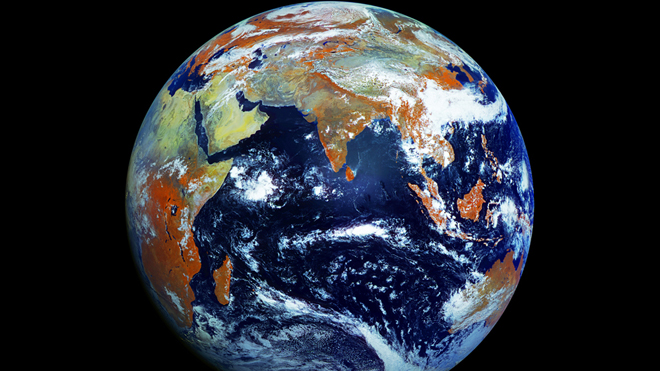
This Week in History, Aug 19 - Aug 25
Aug 19, 1909
First race is held at the Indianapolis Motor Speedway. The first race is held at the Indianapolis Motor Speedway, now the home of the world's most famous motor racing competition, the Indianapolis 500. Built on 328 acres of farmland five miles northwest of Indianapolis, Indiana, the speedway was started by local businessmen as a testing facility for Indiana's growing automobile industry. The idea was that occasional races at the track would pit cars from different manufacturers against each other. After seeing what these cars could do, spectators would presumably head down to the showroom of their choice to get a closer look.
Aug 20, 1911
First around-the-world telegram sent, 66 years before Voyager II launch by a dispatcher in the New York Times office, who sent the first telegram around the world via commercial service. Exactly 66 years later, the National Aeronautics and Space Administration (NASA) sends a different kind of message--a phonograph record containing information about Earth for extraterrestrial beings--shooting into space aboard the unmanned spacecraft Voyager II.
The Times decided to send its 1911 telegram in order to determine how fast a commercial message could be sent around the world by telegraph cable. The message, reading simply "This message sent around the world," left the dispatch room on the 17th floor of the Times building in New York at 7 p.m. on August 20. After it traveled more than 28,000 miles, being relayed by 16 different operators, through San Francisco, the Philippines, Hong Kong, Saigon, Singapore, Bombay, Malta, Lisbon and the Azores--among other locations--the reply was received by the same operator 16.5 minutes later. It was the fastest time achieved by a commercial cablegram since the opening of the Pacific cable in 1900 by the Commercial Cable Company.
Aug 21, 1959
Hawaii becomes 50th state. The modern United States receives its crowning star when President Dwight D. Eisenhower signs a proclamation admitting Hawaii into the Union as the 50th state. The president also issued an order for an American flag featuring 50 stars arranged in staggered rows: five six-star rows and four five-star rows. The new flag became official July 4, 1960. The first known settlers of the Hawaiian Islands were Polynesian voyagers who arrived sometime in the eighth century. In the early 18th century, American traders came to Hawaii to exploit the islands' sandalwood, which was much valued in China at the time. In the 1830s, the sugar industry was introduced to Hawaii and by the mid 19th century had become well established. American missionaries and planters brought about great changes in Hawaiian political, cultural, economic, and religious life. In 1840, a constitutional monarchy was established, stripping the Hawaiian monarch of much of his authority.
Aug 22, 1950
Althea Gibson becomes first African-American on U.S. tennis tour. Officials of the United States Lawn Tennis Association (USLTA) accept Althea Gibson into their annual championship at Forest Hills, New York, making her the first African-American player to compete in a U.S. national tennis competition. Growing up in Harlem, the young Gibson was a natural athlete. She started playing tennis at the age of 14 and the very next year won her first tournament, the New York State girls' championship, sponsored by the American Tennis Association (ATA), which was organized in 1916 by black players as an alternative to the exclusively white USLTA. After prominent doctors and tennis enthusiasts Hubert Eaton and R. Walter Johnson took Gibson under their wing, she won her first of what would be 10 straight ATA championships in 1947.
Aug 23, 1902
Fannie Farmer opens cooking school. Pioneering cookbook author Fannie Farmer, who changed the way Americans prepare food by advocating the use of standardized measurements in recipes, opens Miss Farmer's School of Cookery in Boston. In addition to teaching women about cooking, Farmer later educated medical professionals about the importance of proper nutrition for the sick.
Aug 24, 79
Vesuvius erupts. After centuries of dormancy, Mount Vesuvius erupts in southern Italy, devastating the prosperous Roman cities of Pompeii and Herculaneum and killing thousands. The cities, buried under a thick layer of volcanic material and mud, were never rebuilt and largely forgotten in the course of history. In the 18th century, Pompeii and Herculaneum were rediscovered and excavated, providing an unprecedented archaeological record of the everyday life of an ancient civilization, startlingly preserved in sudden death.
Aug 25, 1835
Known collectively as "The Great Moon Hoax," the articles were supposedly reprinted from the Edinburgh Journal of Science. The byline was Dr. Andrew Grant, described as a colleague of Sir John Herschel, a famous astronomer of the day. Herschel had in fact traveled to Capetown, South Africa, in January 1834 to set up an observatory with a powerful new telescope. As Grant described it, Herschel had found evidence of life forms on the moon, including such fantastic animals as unicorns, two-legged beavers and furry, winged humanoids resembling bats. The articles also offered vivid description of the moon's geography, complete with massive craters, enormous amethyst crystals, rushing rivers and lush vegetation.
History.com